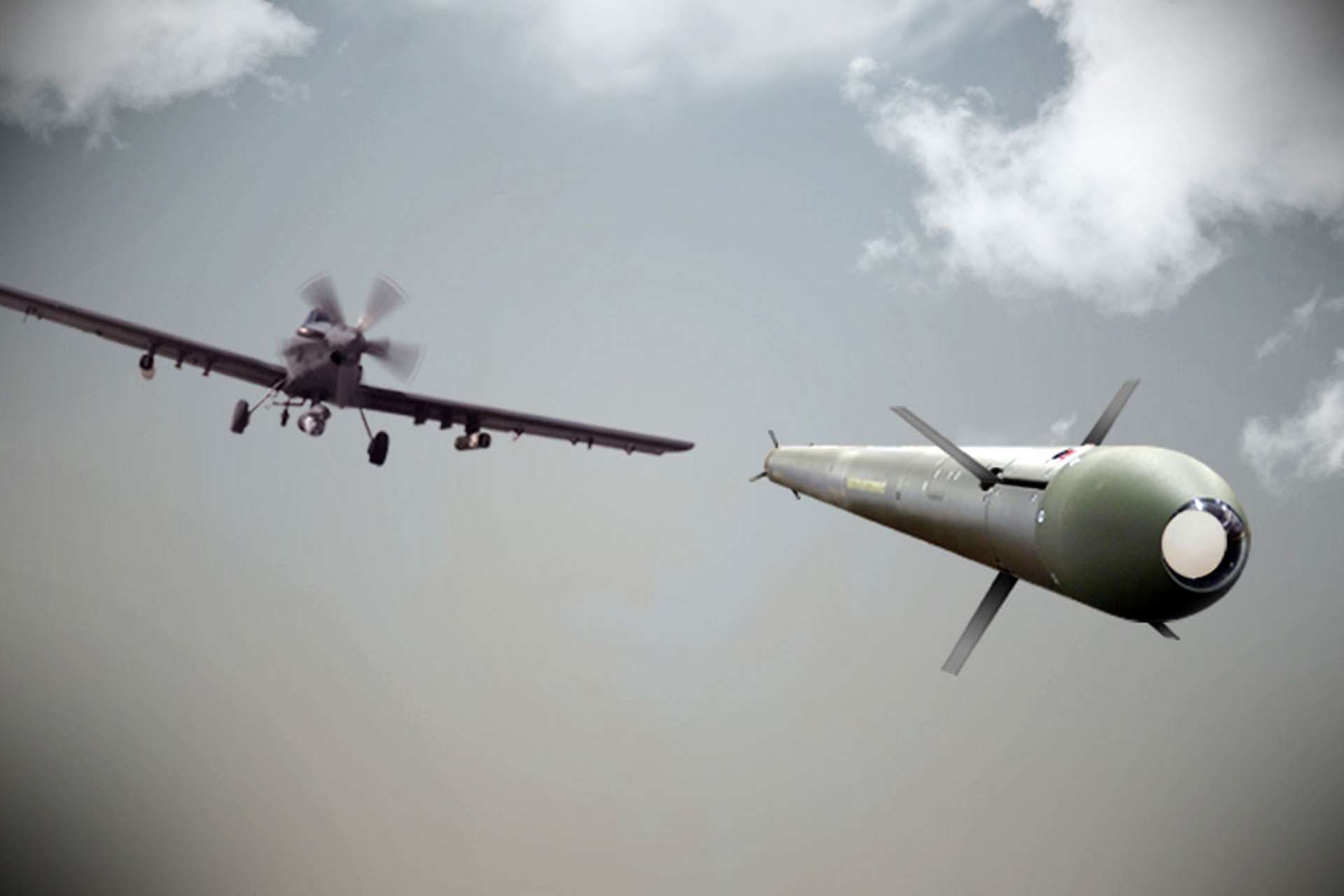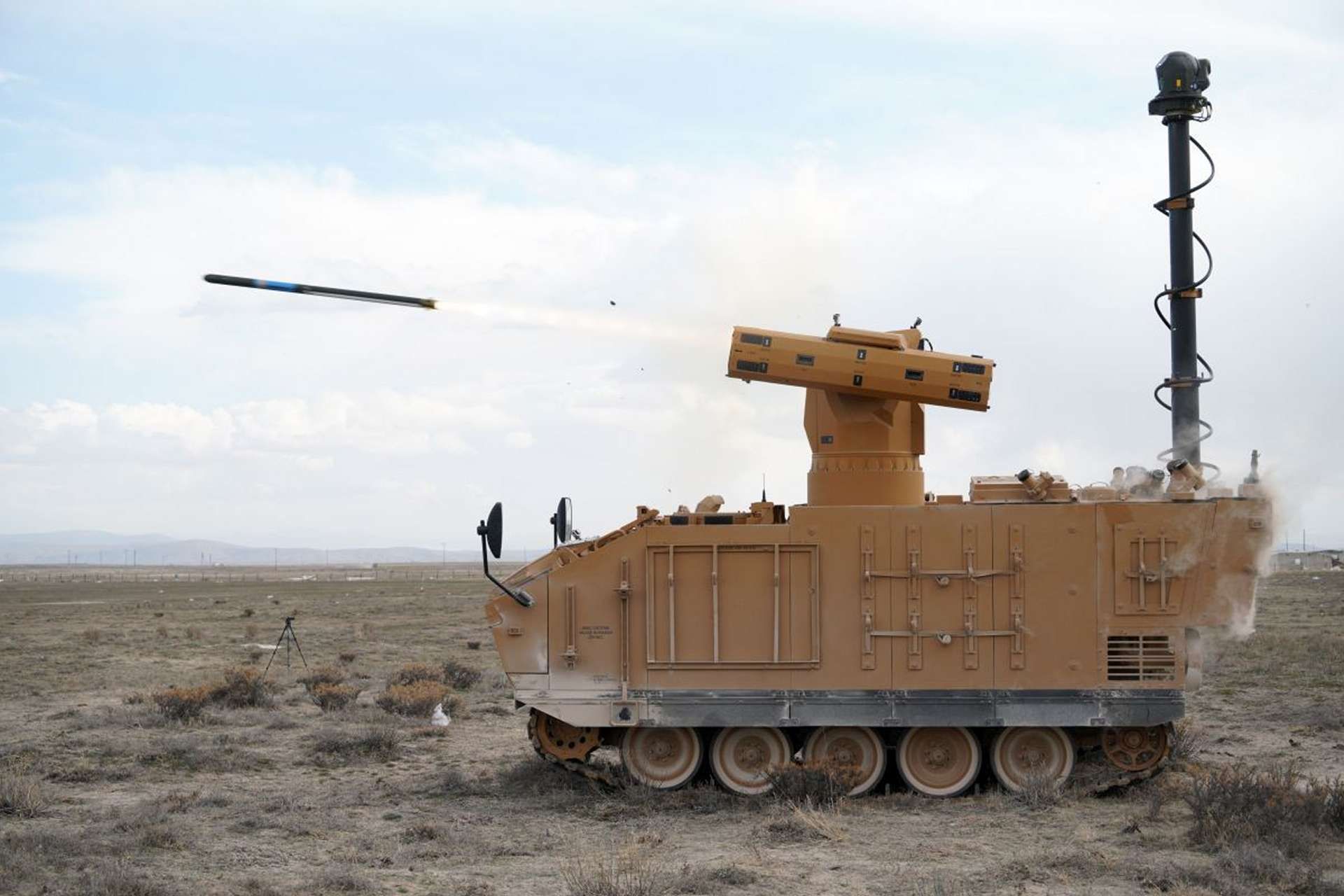Breaking News
Roketsan integrates Cirit 70mm laser-guided missile launcher onto Toyota Hilux.
At the SAHA 2024 exhibition, the Turkish company Roketsan introduced a new configuration of its Cirit 70 mm laser-guided missile mounted on an eighth-generation Toyota Hilux. This development offers a lower-cost option for military operations where affordability and mobility are essential factors. This technical vehicle, also referred to as a non-standard tactical vehicle (NSTV), was presented during a visit by Nigerian officials in July 2024.
Follow Army Recognition on Google News at this link

In this setup, the Hilux-based Cirit system could be effective against lighter targets, providing an alternative to traditional military vehicles. (Picture source: Army Recognition)
The Toyota Hilux is known for its durability and reliability in conflict zones, often serving as a weapon carrier or "technical" (an improvised light fighting vehicle typically based on a pickup) in asymmetric warfare. Its widespread use is due to its robustness, ease of repair, the availability of parts globally, and its ability to operate in difficult terrain. This makes it a practical option for both insurgent groups and military forces with limited access to more advanced vehicles.
The Hilux became prominent during the 1980s in the Chadian-Libyan conflict, later known as the "Toyota War," where it played a role in Chad's success against Libya’s conventional forces. Since then, it has been commonly used in modern conflicts, often equipped with heavy machine guns, anti-tank missiles, and other weaponry, providing a mobile firepower option. Its usage has been observed across various groups, from rebel forces in Africa and the Middle East to special operations forces from different countries.
The Toyota Hilux in this configuration has been modified to carry a turret on its flatbed, equipped with four Cirit missiles. Aselsan’s Karakurt electro-optical and infrared (EO/IR) system is installed on top of the cabin, which includes a laser designator for target acquisition. This EO/IR system improves the vehicle's capability to identify and engage targets, offering a cost-effective alternative to more expensive and heavily armed systems like the KMC, which fires UMTAS anti-tank guided missiles (ATGMs). In this setup, the Hilux-based system could be effective against lighter targets, providing an alternative to traditional military vehicles.

The Cirit missile is designed to bridge the gap between unguided 70 mm rockets and more expensive guided anti-tank systems. (Picture source: Roketsan)
The Cirit missile offers three types of warheads: anti-personnel/incendiary/shaped charge, high-explosive, and thermobaric. It is designed to bridge the gap between unguided 70 mm rockets and more expensive guided anti-tank systems. The missile can be fired from specially developed pods, like the four-missile pods mounted on the Hilux, or from launchers compatible with standard Hydra 70 rockets.
The Cirit system is already in use on multiple Turkish platforms, including the T129 ATAK attack helicopter, ULAQ unmanned surface vessels (USVs), and land combat vehicles such as the Kaplan with KMC launchers. The missile has been employed in various conflicts, including the Kurdish-Turkish conflict, the Syrian Civil War, and the 2020 Nagorno-Karabakh conflict.
This configuration demonstrated by Roketsan aligns with similar concepts seen in other nations. For instance, the U.S. has developed a system called VAMPIRE, which fires APKWS II laser-guided rockets from civilian or commercially available vehicles. Both systems emphasize the use of relatively simple platforms to deploy advanced weaponry, providing cost-effective firepower, especially in situations where traditional armored vehicles may be financially prohibitive.

The Cirit system is already in use on multiple Turkish platforms, including the T129 ATAK attack helicopter, ULAQ unmanned surface vessels (USVs), and land combat vehicles such as the Kaplan with KMC launchers. (Picture source: Roketsan)
Roketsan's integration of the Cirit missile onto a civilian pickup truck reflects a shift toward more affordable and mobile military solutions. The Hilux-based configuration shows how lower-cost systems can meet the needs of modern asymmetric warfare. By offering a platform that is less expensive than standard military armored vehicles and can be equipped with precision-guided munitions such as the Cirit, Roketsan addresses the demand for adaptable and cost-efficient military systems.
This development coincides with increasing demand for flexible and affordable combat systems, particularly in regions like Africa and the Middle East, where such systems can provide both mobility and firepower without the financial cost of traditional military vehicles.
As presented at the SAHA 2024 exhibition, Roketsan continues to offer adaptable missile systems for both Turkey and international customers. The integration of the Cirit missile onto the Toyota Hilux provides an option for forces seeking precision firepower without relying on more expensive traditional armored vehicles.


























